Walk-In Refrigerators
-
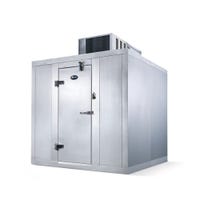 AmeriKooler QC081272**NBSC 8' x 12' x 7' -2" Indoor Floorless Walk-In Cooler w/ Top Mount CompressorQuick ShipPrice From: $14,920.00 / Each
AmeriKooler QC081272**NBSC 8' x 12' x 7' -2" Indoor Floorless Walk-In Cooler w/ Top Mount CompressorQuick ShipPrice From: $14,920.00 / Each -
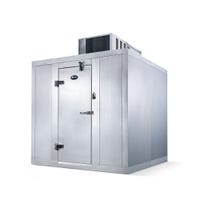 AmeriKooler QC080877**FBSC 8' x 8' x 7' -7" Indoor Walk-In Cooler w/ Aluminum Floor & Top Mount CompressorQuick ShipPrice From: $13,342.00 / Each
AmeriKooler QC080877**FBSC 8' x 8' x 7' -7" Indoor Walk-In Cooler w/ Aluminum Floor & Top Mount CompressorQuick ShipPrice From: $13,342.00 / Each -
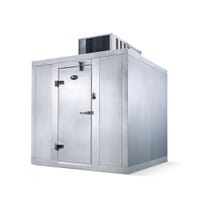 AmeriKooler QC061077**FBSC 6' x 10' x 7' -7" Indoor Walk-In Cooler w/ Aluminum Floor & Top Mount CompressorQuick ShipPrice From: $13,165.00 / Each
AmeriKooler QC061077**FBSC 6' x 10' x 7' -7" Indoor Walk-In Cooler w/ Aluminum Floor & Top Mount CompressorQuick ShipPrice From: $13,165.00 / Each -
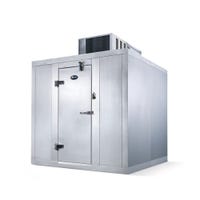 AmeriKooler QC081072**NBSC 8' x 10' x 7' -2" Indoor Floorless Walk-In Cooler w/ Top Mount CompressorQuick ShipPrice From: $12,760.00 / Each
AmeriKooler QC081072**NBSC 8' x 10' x 7' -2" Indoor Floorless Walk-In Cooler w/ Top Mount CompressorQuick ShipPrice From: $12,760.00 / Each -
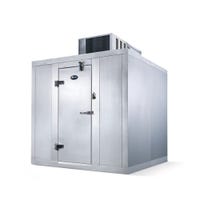 AmeriKooler QC061272**NBSC 6' x 12' x 7' -2" Indoor Floorless Walk-In Cooler w/ Top Mount CompressorQuick ShipPrice From: $12,595.00 / Each
AmeriKooler QC061272**NBSC 6' x 12' x 7' -2" Indoor Floorless Walk-In Cooler w/ Top Mount CompressorQuick ShipPrice From: $12,595.00 / Each -
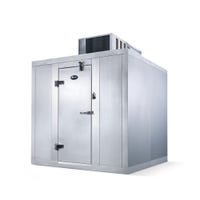 AmeriKooler QC080872**NBSC 8' x 8' x 7' -2" Indoor Floorless Walk-In Cooler w/ Top Mount CompressorQuick ShipPrice From: $11,876.00 / Each
AmeriKooler QC080872**NBSC 8' x 8' x 7' -2" Indoor Floorless Walk-In Cooler w/ Top Mount CompressorQuick ShipPrice From: $11,876.00 / Each -
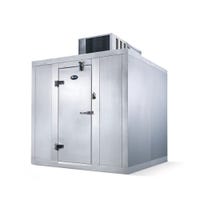 AmeriKooler QC061072**NBSC 6' x 10' Indoor Floorless Walk-In Cooler w/ Top Mount CompressorQuick ShipPrice From: $11,791.00 / Each
AmeriKooler QC061072**NBSC 6' x 10' Indoor Floorless Walk-In Cooler w/ Top Mount CompressorQuick ShipPrice From: $11,791.00 / Each -
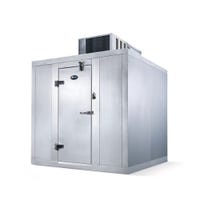 Amerikooler QC060872**NBSC 5' 11" x 7' 9" Indoor Floorless Walk-In Cooler w/ Top Mount Compressor | Quick ShipQuick ShipPrice From: $10,987.00 / Each
Amerikooler QC060872**NBSC 5' 11" x 7' 9" Indoor Floorless Walk-In Cooler w/ Top Mount Compressor | Quick ShipQuick ShipPrice From: $10,987.00 / Each -
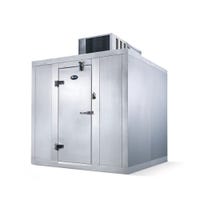 Amerikooler QC060672**NBSC 6' x 6' Indoor Floorless Walk-In Cooler w/ Top Mount Compressor | Quick ShipQuick ShipPrice From: $9,588.00 / Each
Amerikooler QC060672**NBSC 6' x 6' Indoor Floorless Walk-In Cooler w/ Top Mount Compressor | Quick ShipQuick ShipPrice From: $9,588.00 / Each -
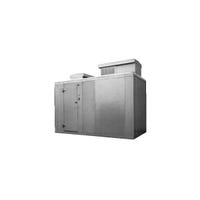 Nor-Lake KODB771014-C Kold Locker Outdoor Walk-In Cooler w/ FloorFree ShippingRetail Price: $22,851.00 / Each
Nor-Lake KODB771014-C Kold Locker Outdoor Walk-In Cooler w/ FloorFree ShippingRetail Price: $22,851.00 / Each -
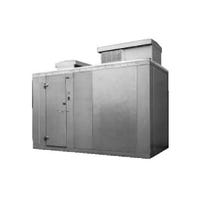 Nor-Lake Kold Locker KODB1014-C 10' x 14' Outdoor Walk-In CoolerFree ShippingRetail Price: $22,397.00 / Each
Nor-Lake Kold Locker KODB1014-C 10' x 14' Outdoor Walk-In CoolerFree ShippingRetail Price: $22,397.00 / Each -
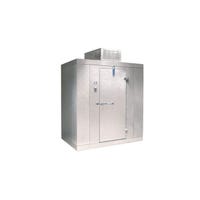 Nor-Lake Kold Locker KLB771014-C 10' x 14' Indoor Walk-In Cooler w/ FloorFree ShippingRetail Price: $21,493.00 / Each
Nor-Lake Kold Locker KLB771014-C 10' x 14' Indoor Walk-In Cooler w/ FloorFree ShippingRetail Price: $21,493.00 / Each -
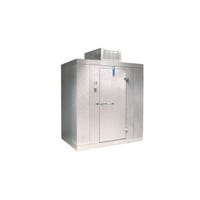 Nor-Lake Kold Locker KLB1014-C 10' x 14' Indoor Walk-In Cooler w/ FloorFree ShippingRetail Price: $21,038.00 / Each
Nor-Lake Kold Locker KLB1014-C 10' x 14' Indoor Walk-In Cooler w/ FloorFree ShippingRetail Price: $21,038.00 / Each -
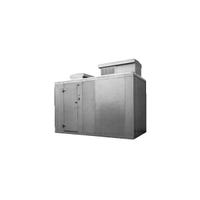 Nor-Lake KODB771012-C Kold Locker Outdoor Walk-In Cooler w/ FloorFree ShippingRetail Price: $20,997.00 / Each
Nor-Lake KODB771012-C Kold Locker Outdoor Walk-In Cooler w/ FloorFree ShippingRetail Price: $20,997.00 / Each -
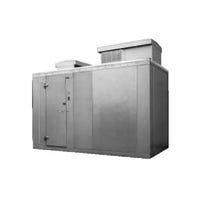 Nor-Lake Kold Locker KODB1012-C 10' x 12' Outdoor Walk-In CoolerFree ShippingRetail Price: $20,615.00 / Each
Nor-Lake Kold Locker KODB1012-C 10' x 12' Outdoor Walk-In CoolerFree ShippingRetail Price: $20,615.00 / Each -
 Nor-Lake Kold Locker KLB771012-C 10' x 12' Indoor Walk-In Cooler w/ FloorFree ShippingRetail Price: $19,734.00 / Each
Nor-Lake Kold Locker KLB771012-C 10' x 12' Indoor Walk-In Cooler w/ FloorFree ShippingRetail Price: $19,734.00 / Each -
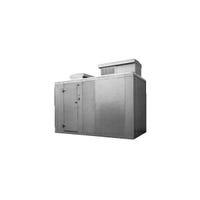 Nor-Lake Kold Locker KODB77814-C 8' x 14' Outdoor Walk-In Cooler w/ FloorFree ShippingRetail Price: $19,654.00 / Each
Nor-Lake Kold Locker KODB77814-C 8' x 14' Outdoor Walk-In Cooler w/ FloorFree ShippingRetail Price: $19,654.00 / Each -
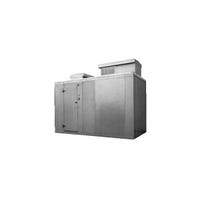 Nor-Lake KODB771010-C Kold Locker Outdoor Walk-In Cooler w/ FloorFree ShippingRetail Price: $19,581.00 / Each
Nor-Lake KODB771010-C Kold Locker Outdoor Walk-In Cooler w/ FloorFree ShippingRetail Price: $19,581.00 / Each -
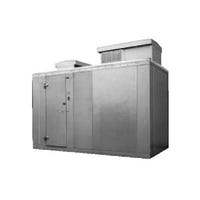 Nor-Lake Kold Locker KODB814-C 8' x 14' Outdoor Walk-In CoolerFree ShippingRetail Price: $19,310.00 / Each
Nor-Lake Kold Locker KODB814-C 8' x 14' Outdoor Walk-In CoolerFree ShippingRetail Price: $19,310.00 / Each -
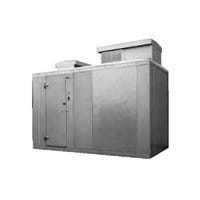 Nor-Lake Kold Locker KODB1010-C 10' x 10' Outdoor Walk-In Cooler w/ FloorFree ShippingRetail Price: $19,235.00 / Each
Nor-Lake Kold Locker KODB1010-C 10' x 10' Outdoor Walk-In Cooler w/ FloorFree ShippingRetail Price: $19,235.00 / Each -
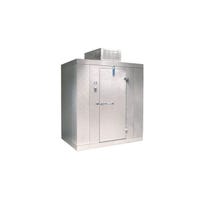 Nor-Lake Kold Locker KLB1012-C 10' x 12' Indoor Walk-In Cooler w/ FloorFree ShippingRetail Price: $19,186.00 / Each
Nor-Lake Kold Locker KLB1012-C 10' x 12' Indoor Walk-In Cooler w/ FloorFree ShippingRetail Price: $19,186.00 / Each -
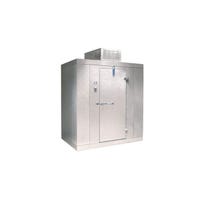 Nor-Lake Kold Locker KLB77814-C 8' x 14' Indoor Walk-In CoolerFree ShippingRetail Price: $18,462.00 / Each
Nor-Lake Kold Locker KLB77814-C 8' x 14' Indoor Walk-In CoolerFree ShippingRetail Price: $18,462.00 / Each -
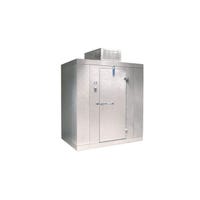 Nor-Lake Kold Locker KLB771010-C 10' x 10' Indoor Walk-In Cooler w/ FloorFree ShippingRetail Price: $18,405.00 / Each
Nor-Lake Kold Locker KLB771010-C 10' x 10' Indoor Walk-In Cooler w/ FloorFree ShippingRetail Price: $18,405.00 / Each -
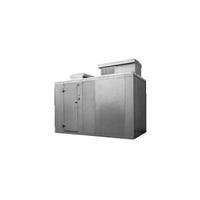 Nor-Lake Kold Locker KODB77812-C 8' x 12' Outdoor Walk-In Cooler w/ FloorFree ShippingRetail Price: $18,367.00 / Each
Nor-Lake Kold Locker KODB77812-C 8' x 12' Outdoor Walk-In Cooler w/ FloorFree ShippingRetail Price: $18,367.00 / Each -
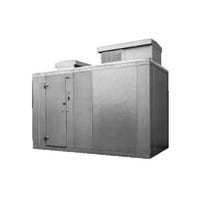 Nor-Lake Kold Locker KODB812-C 8' x 12' Outdoor Walk-In CoolerFree ShippingRetail Price: $18,015.00 / Each
Nor-Lake Kold Locker KODB812-C 8' x 12' Outdoor Walk-In CoolerFree ShippingRetail Price: $18,015.00 / Each -
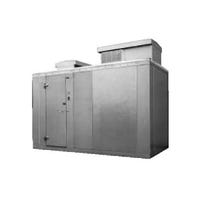 Nor-Lake Kold Locker KODB77614-C 6' x 14' Outdoor Walk-In CoolerFree ShippingRetail Price: $17,929.00 / Each
Nor-Lake Kold Locker KODB77614-C 6' x 14' Outdoor Walk-In CoolerFree ShippingRetail Price: $17,929.00 / Each -
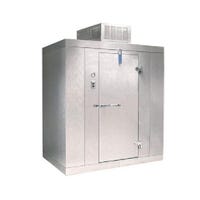 Nor-Lake Kold Locker KLB814-C Indoor Walk-In Cooler w/ FloorFree ShippingRetail Price: $17,911.00 / Each
Nor-Lake Kold Locker KLB814-C Indoor Walk-In Cooler w/ FloorFree ShippingRetail Price: $17,911.00 / Each -
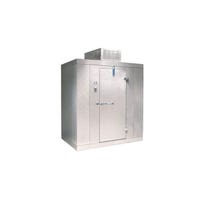 Nor-Lake Kold Locker KLB1010-C 10' x 10' Indoor Walk-In Cooler w/ FloorFree ShippingRetail Price: $17,892.00 / Each
Nor-Lake Kold Locker KLB1010-C 10' x 10' Indoor Walk-In Cooler w/ FloorFree ShippingRetail Price: $17,892.00 / Each -
 Nor-Lake Kold Locker KODB614-C 6' x 14' Outdoor Walk-In CoolerFree ShippingRetail Price: $17,584.00 / Each
Nor-Lake Kold Locker KODB614-C 6' x 14' Outdoor Walk-In CoolerFree ShippingRetail Price: $17,584.00 / Each -
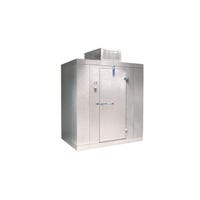 Nor-Lake Kold Locker KLB741014-C 10' x 14' Indoor Walk-In CoolerFree ShippingRetail Price: $17,528.00 / Each
Nor-Lake Kold Locker KLB741014-C 10' x 14' Indoor Walk-In CoolerFree ShippingRetail Price: $17,528.00 / Each -
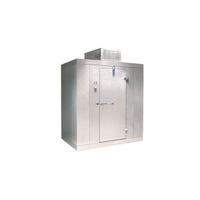 Nor-Lake Kold Locker KLB77812-C 8' x 12' Indoor Walk-In Cooler w/ FloorFree ShippingRetail Price: $17,065.00 / Each
Nor-Lake Kold Locker KLB77812-C 8' x 12' Indoor Walk-In Cooler w/ FloorFree ShippingRetail Price: $17,065.00 / Each -
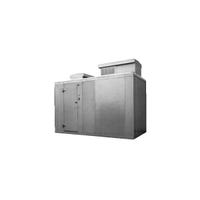 Nor-Lake Kold Locker KODB77810-C 8' x 10' Outdoor Walk-In Cooler w/ FloorFree ShippingRetail Price: $16,969.00 / Each
Nor-Lake Kold Locker KODB77810-C 8' x 10' Outdoor Walk-In Cooler w/ FloorFree ShippingRetail Price: $16,969.00 / Each -
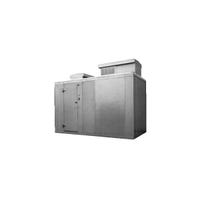 Nor-Lake Kold Locker KODB77612-C 6' x 12' Outdoor Walk-In CoolerFree ShippingRetail Price: $16,725.00 / Each
Nor-Lake Kold Locker KODB77612-C 6' x 12' Outdoor Walk-In CoolerFree ShippingRetail Price: $16,725.00 / Each -
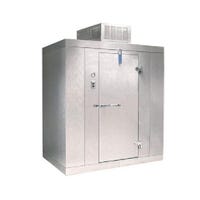 Nor-Lake Kold Locker KLB812-C 8' x 12' Indoor Walk-In Cooler w/ FloorFree ShippingRetail Price: $16,714.00 / Each
Nor-Lake Kold Locker KLB812-C 8' x 12' Indoor Walk-In Cooler w/ FloorFree ShippingRetail Price: $16,714.00 / Each -
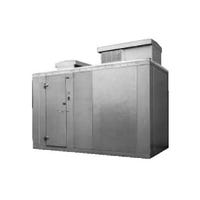 Nor-Lake Kold Locker KODB810-C 8' x 10' Outdoor Walk-In CoolerFree ShippingRetail Price: $16,653.00 / Each
Nor-Lake Kold Locker KODB810-C 8' x 10' Outdoor Walk-In CoolerFree ShippingRetail Price: $16,653.00 / Each -
 Nor-Lake Kold Locker KLB77614-C 6' x 14' Indoor Walk-In CoolerFree ShippingRetail Price: $16,641.00 / Each
Nor-Lake Kold Locker KLB77614-C 6' x 14' Indoor Walk-In CoolerFree ShippingRetail Price: $16,641.00 / Each -
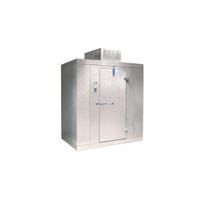 Nor-Lake Kold Locker KLB741012-C 10' x 12' Indoor Walk-In CoolerFree ShippingRetail Price: $16,609.00 / Each
Nor-Lake Kold Locker KLB741012-C 10' x 12' Indoor Walk-In CoolerFree ShippingRetail Price: $16,609.00 / Each -
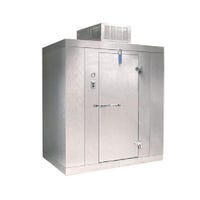 Nor-Lake Kold Locker KLB614-C 6' x 14' Indoor Walk-In Cooler w/ FloorFree ShippingRetail Price: $16,296.00 / Each
Nor-Lake Kold Locker KLB614-C 6' x 14' Indoor Walk-In Cooler w/ FloorFree ShippingRetail Price: $16,296.00 / Each -
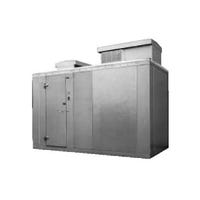 Nor-Lake Kold Locker KODB612-C 6' x 12' Outdoor Walk-In CoolerFree ShippingRetail Price: $16,281.00 / Each
Nor-Lake Kold Locker KODB612-C 6' x 12' Outdoor Walk-In CoolerFree ShippingRetail Price: $16,281.00 / Each -
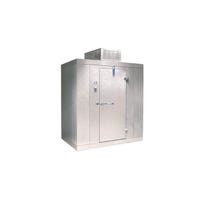 Nor-Lake Kold Locker KLB77810-C 8' x 10' Indoor Walk-In Cooler w/ FloorFree ShippingRetail Price: $15,858.00 / Each
Nor-Lake Kold Locker KLB77810-C 8' x 10' Indoor Walk-In Cooler w/ FloorFree ShippingRetail Price: $15,858.00 / Each
Increase your business' ability to refrigerate in bulk with a walk-in cooler and refrigerator.
Walk-in coolers are a staple of industrial kitchens because of their ability to refrigerate and store large amounts of food in one space. Keeping food items properly cooled is one of the most important aspects to serving delicious and safe food to customers. Food that is left too long in an improper environment can quickly deteriorate in quality and even cause food-borne illnesses, so it's essential to make sure your operation is equipped with the right commercial walk-in refrigerator.
Burkett provides several cooler options such as indoor walk-in coolers or outdoor walk-in coolers, door hinge, and refrigeration location. Another big consideration when selecting your walk-in cooler is whether or not you'll need it to come with a pre-installed floor. Some kitchens may choose to install their own floor to match the rest of the restaurant or to meet specific cleaning requirements, while others may find that an included floor is the best fit. Many of our walk-ins come with digital thermometers and light switches, as well as deadbolts to protect your product during or after business hours.
When choosing the perfect walk-in refrigerator for your restaurant, it's important to consider the space you have available. A walk-in is a very big investment, so you'll want to make sure it fits and is in a convenient location with easily accessibility. Contact a dedicated Burkett sales rep for industry experienced assistance in making this purchase!
For accessories or replacement parts, see Burkett's commercial refrigeration parts & accessories or commercial shelving to build the perfect storage set up. Check out other great refrigeration brands like Delfield, True Refrigeration, Turbo Air, and more to outfit your kitchen with any kind of commercial refrigeration you may need.
Buying considerations for walk-in coolers and refrigerators
Installation - If you're searching for a walk-in cooler, one of the first things to think about is whether it will be installed indoors or outdoors. The external metal of outdoor walk-in coolers will require a specific coating to shield it from the elements. A unique cover will also be required for the compressor. Indoor walk-in coolers will have their own dedicated space, turning them into a small room of their own. Whatever type of walk-in refrigerator you decide on, it will undoubtedly be a large project. When possible, add a walk-in cooler during construction or on slow days. Both on-site and pre-assembled walk-in units are available. If the unit won't fit through your door, it will need to be put together on-site.
Dimensions - You should consider the unit's overall size whether you're installing a walk-in refrigerator in an already-existing structure or constructing a completely new system. The interior dimensions will be slightly smaller than the exterior as each wall has about four inches of insulation. When calculating the amount of storage space you require, keep this in mind.
Insulation type - Insulation can play a significant role in energy cost and efficiency because a walk-in cooler or refrigerator is responsible for cooling an entire room's worth of food products. When it comes to commercial refrigeration insulation, there are a few common choices:
- Foamed-in-place polyurethane - one of the most common insulation choices today for commercial refrigeration. The metal panels that make up the walk-in unit's walls and ceilings are directly coated with this type of insulation. With a melting point of about 700°F, it is both fire and moisture resistant. This strong insulation style is a long-lasting insulation system that will seal cold air inside your walk-in unit.
- Extruded polystyrene (XEPS) - Foam blocks are used as the insulating material for this method of insulation, which is created by laminating the metal exterior of the cooler on top of them. While less expensive than other solutions, this option is less effective, and the panels may delaminate with time.
- Laminated panels - This kind of insulation is created by attaching polyurethane slabs to the internal surfaces of the interior panels of the walk-in refrigerator, much like extruded polystyrene. While still economical, this choice might not be reliable in the long run.
- Flooring - Whether or whether you require a floor is another factor to take into account when looking for a walk-in cooler. Both options have particular advantages of their own. The floors that come with walk-in refrigerators are often made of metal with grooves or textures to avoid slipping as the floors of these units tend to become slippery. Many businesses decide to install their own tile floors inside the walk-in to give it a more personalized appearance or to complement the flooring in the rest of their industrial kitchen. Insulation is beneficial for any kind of flooring used in a walk-in refrigerator. The ease of cleaning should be taken into account while selecting walk-in refrigerator flooring. Debris is inevitable given the constant in and out foot movement, as well as the transportation of food. The cleanup process should be quick and easy when spills occur.
To learn more about choosing your walk-in cooler, check out our Walk-In Coolers Buyer's Guide.
Frequently Asked Questions About Walk-in Coolers and Refrigerators
How long will a walk-in cooler last?
The lifespan of walk-in coolers is typically estimated to be 15 years or so. Your walk-in refrigerator could last even longer with regular cleaning and maintenance.
When should I buy a new walk-in unit?
A walk-in cooler might need to be replaced earlier than expected if:
- The previous cooler is no longer as effective at maintaining the desired temperatures.
- You are opening a new location or growing your company.
- The outer lamination or separation of panels from insulation has visible wear.
- On the inside, condensation or frost buildup increases. This can be a sign of a defective seal.
What is an R-value?
The R-value of a refrigerator in commercial refrigeration represents the degree of insulation effectiveness. The ability of the unit to keep ambient air outside of the cabinet increases with increasing R-value. Since R-value does decline with time, some manufacturers offer a "projected five year R-value" to assist you in determining whether it is the best fit for your company. Find the R-value on the specification sheet for your walk-in cooler.

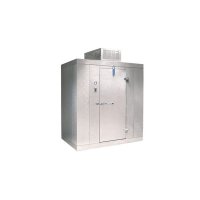
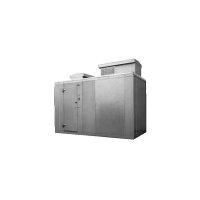
Login and Registration Form